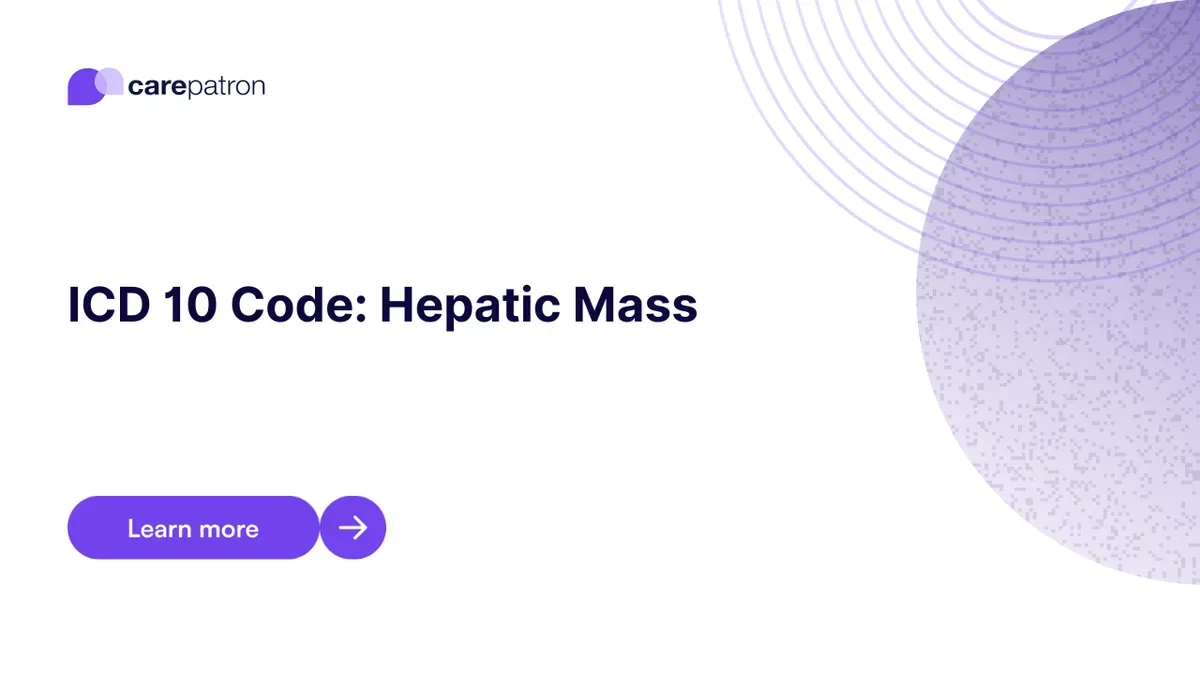
Hepatic Mass ICD-10-CM Codes
Learn about Hepatic Mass ICD-10-CM codes in 2023. This thorough manual contains billable codes, clinical descriptions, synonyms, and more information.
Use Code
Commonly asked questions
No, hepatic masses can be benign (non-cancerous) or malignant (cancerous). Accurate diagnosis and appropriate testing are essential to determine the nature of the mass.
Common symptoms may include abdominal pain, unexplained weight loss, jaundice (yellowing of the skin and eyes), and changes in appetite.
Diagnosis typically involves imaging tests such as ultrasound, CT scans, and MRI, along with further evaluation through biopsy to determine the nature of the mass.
EHR and practice management software
Get started for free
*No credit card required
Free
$0/usd
Unlimited clients
Telehealth
1GB of storage
Client portal text
Automated billing and online payments
